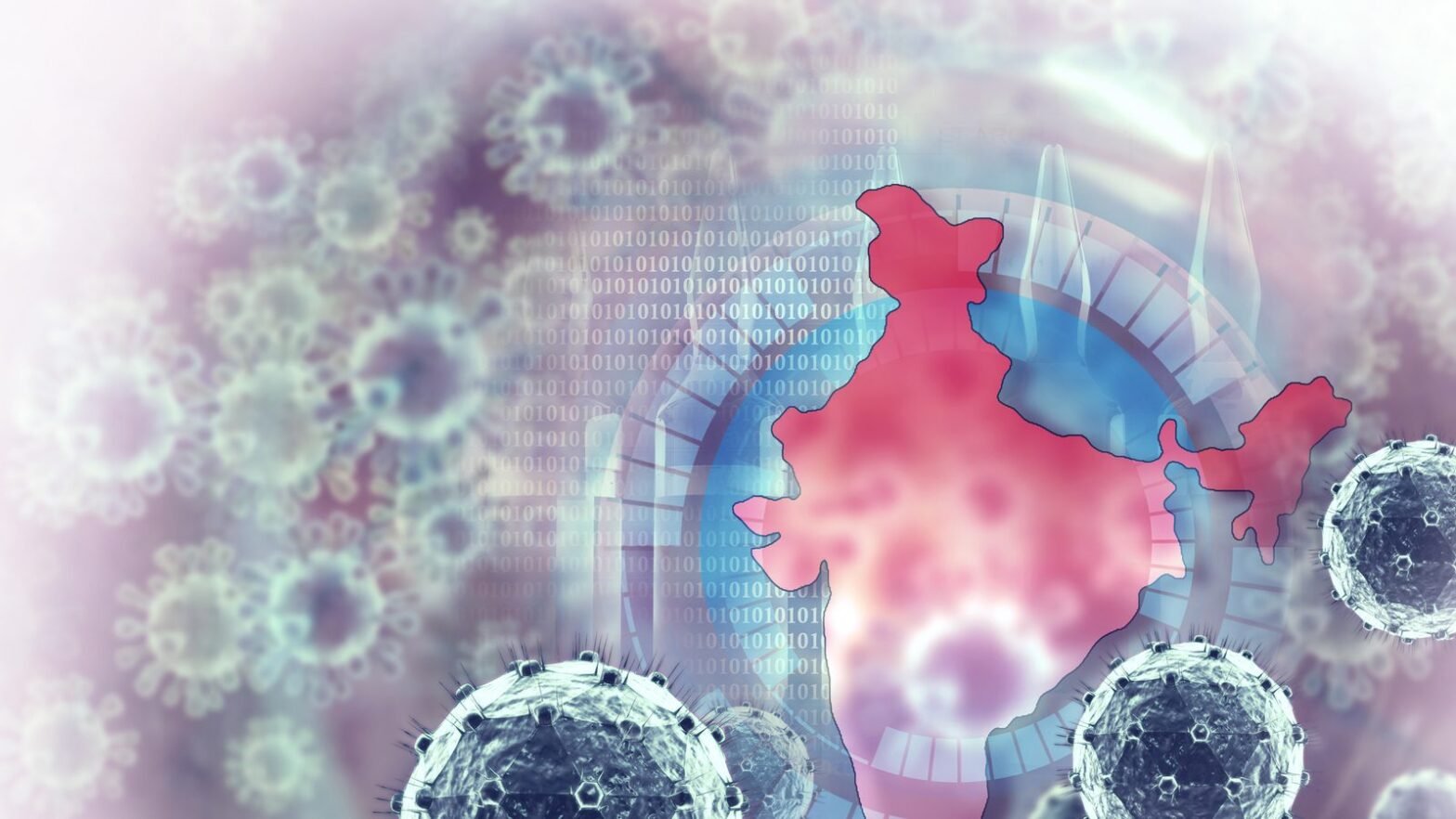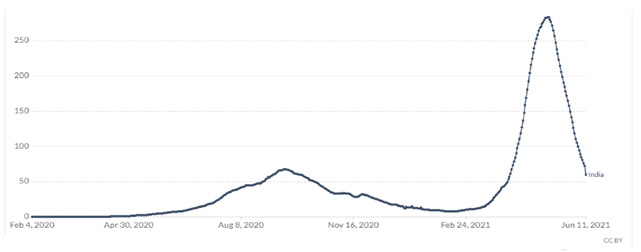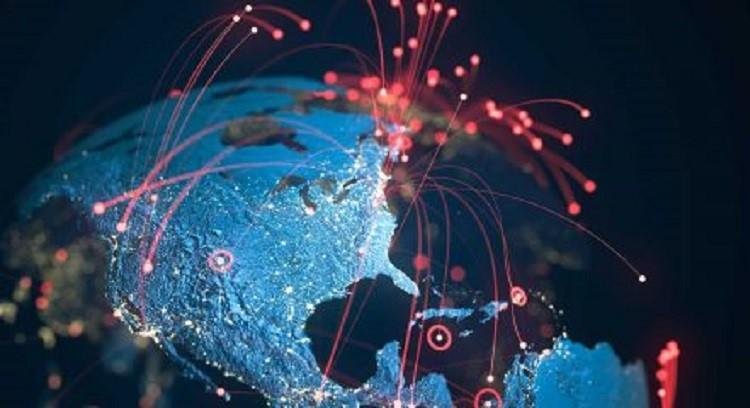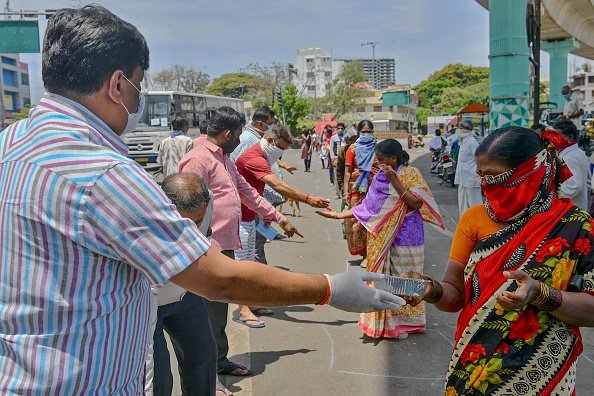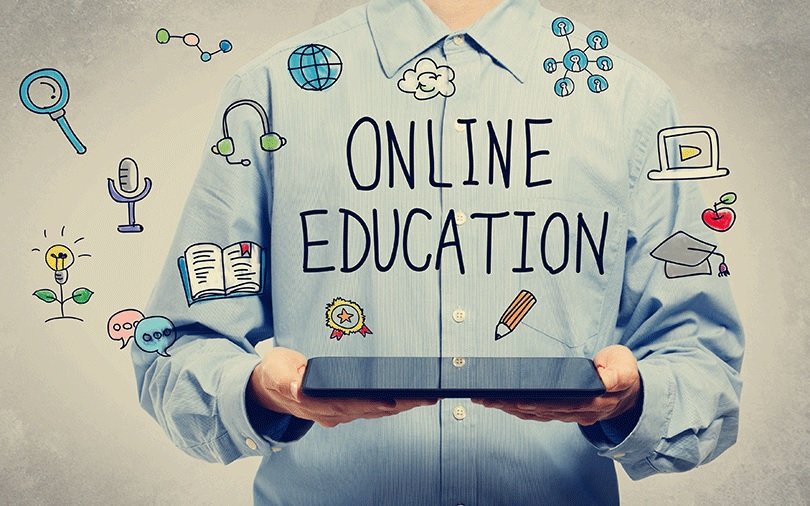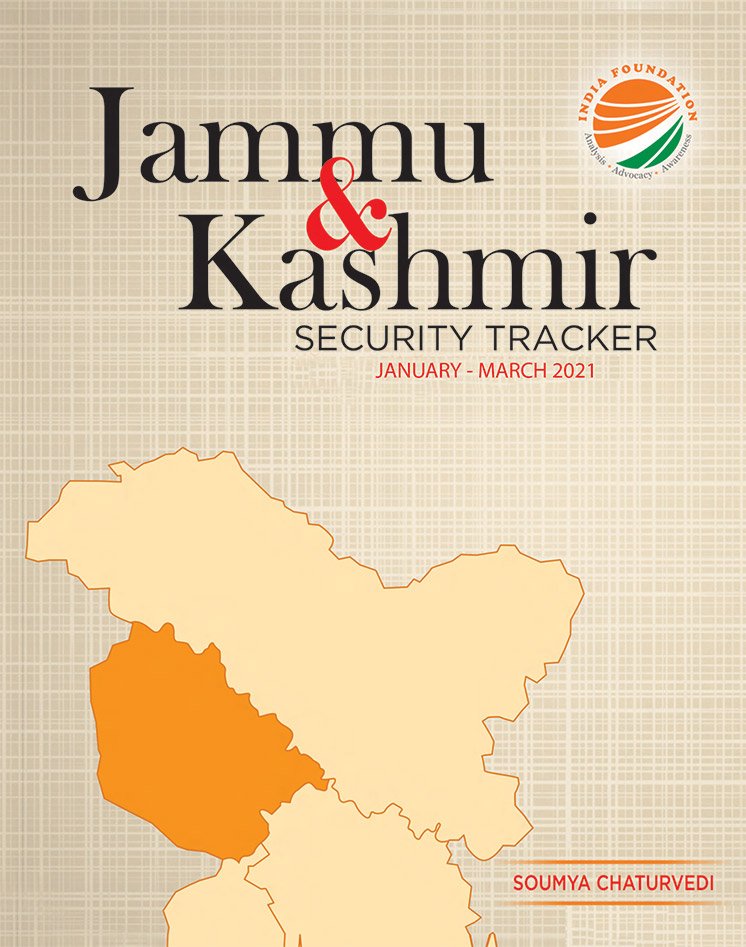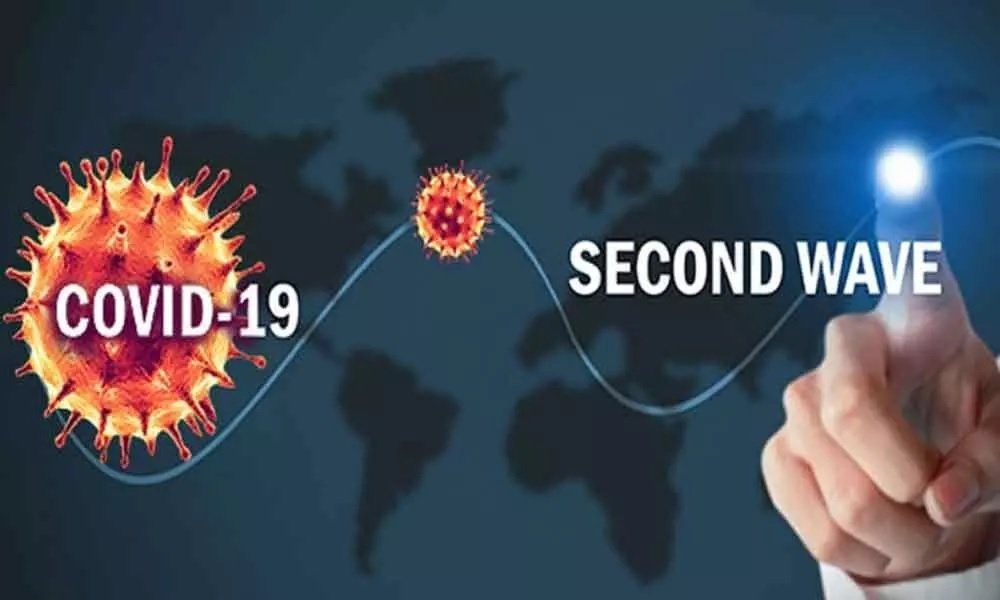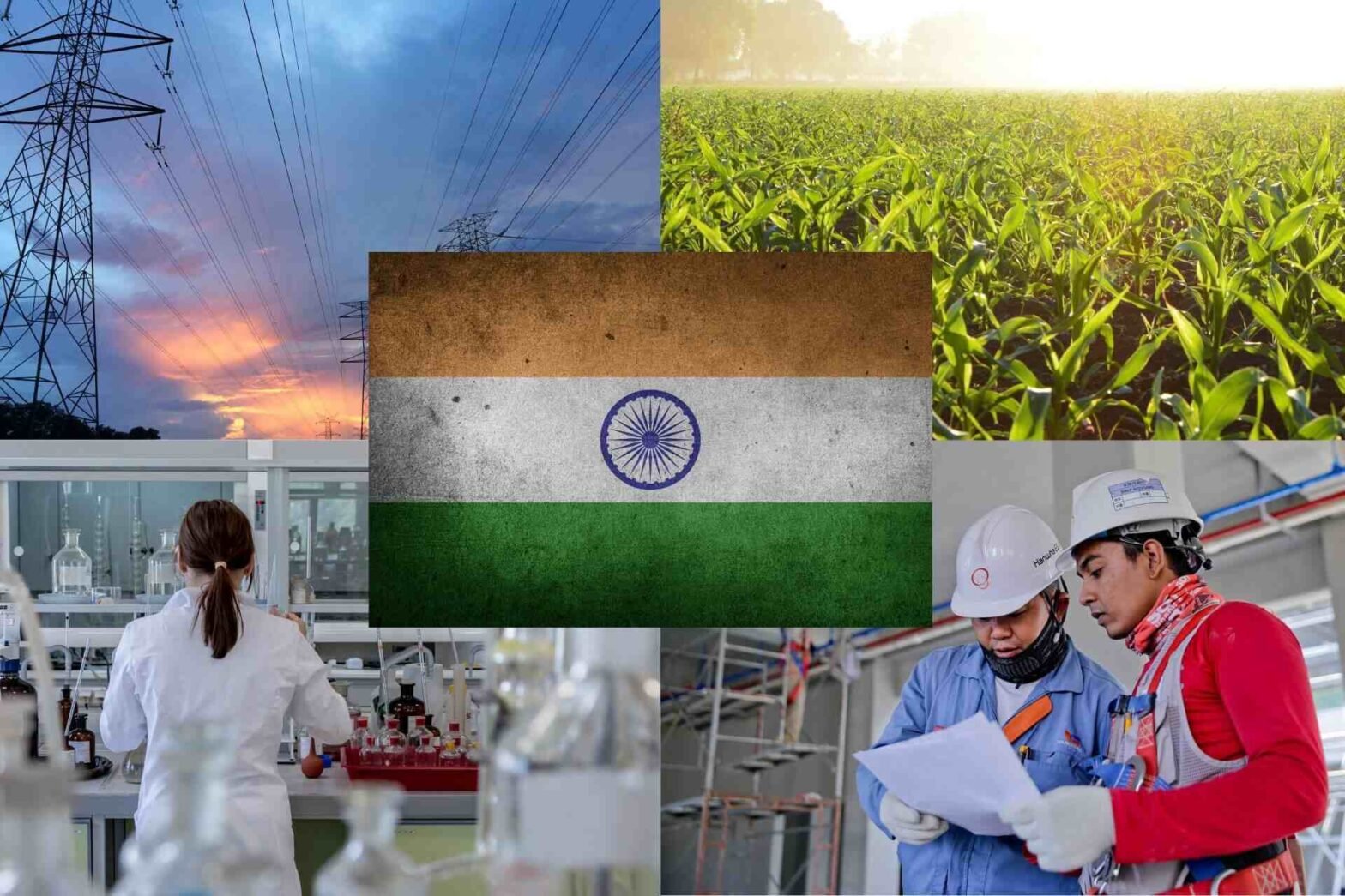“No longer were there individual destinies; only a collective destiny, made of plague and emotions, shared by all.” (from “The Plague” by Albert Camus)
A Brief Backdrop
December 31, 2019 ushered in a new normal, irrevocably changing daily dynamics. A special edition virus from Wuhan in China – the SARS-CoV-2, a Novel coronavirus, which is classified as the seventh member of the family Coronaviridae, sub family Orthocoronavirinae[1] – was introduced to the world. It proceeded to take over our routines, making us slaves to masks, sanitisers, and panic. This virus family are a group of zoonotic viruses usually transmitted to humans through contact with infected animals, mainly bats and snakes, which are considered the natural reservoir of most coronaviruses, and which gave rise to the initial surmise that COVID-19 originated from a wet market in Huanan, Wuhan, which was said to be the ground zero for the epidemic. More on that shortly.
A study of the lipid molecules of these viruses shows that molecules such as caveolins, clathrins and dynamin have a fundamental role in their entry into hosts and targeting host lipids. COVID-19 binds the angiotensin-converting enzyme-2 receptor, the ACE2, on the membrane host cell to enable it to infect the host cell in tandem with an intracellular protein—protease TMPRSS2.[2] According to Genome sequencing the closest similarity was between the COVID-19 genomes and the bat CoV. Results revealed that all COVID-19 strains were similar, compared with other strains related to the same family. COVID-19 also possesses accessory proteins that interfere with the host’s distinctive immune response, including spike (S) glycoprotein, small envelope (E) protein, matrix (M) protein and nucleocapsid (N) protein.
Given the extensive research on the virus and its comprehensive genome sequencing, the possibility of a synthetic virus has currency; especially as the Chinese authorities had chosen to cloud and obfuscate information about the pandemic, which was well in evidence by early November 2019, terming it an alt right conspiracy theory. A recent WHO-led team to probe the origins of the pandemic, which has led so far to the death of 3,697,151 people, and 171,708,011 confirmed cases of the SARS-COV-2 infection[3] (figures according to assessments have been grossly under reported), stated that their finding were inconclusive. This was a quantifiable deviation from the earlier zoonotic theory put out by WHO, of the virus species-jumping and causing the SARS-CoV-2 mutation.
The Wuhan Institute of Virology (WIV), which has a P4 laboratory, had spent decades researching and collecting coronaviruses. Of note is the RaTG13 virus, procured from the mines in Mojiang after many miners were infected over 7 years ago. This was confirmed by Shi Zhengli, Chief virologist in WIV in November 2020 and again in February 2021. The possibility has now been admitted, with the qualifier that it remains less likely, that the virus has been sequenced and synthesised. The apprehension that WIV was actively testing these viruses to determine their ability to infect people as well as synthesise mutations is now a cause of serious international worry. China is alleged to have initiated a massive cover up programme, and co-opted not only members of the WHO, but also scientists—for example Peter Daskzak, the president of the Eco Health Alliance of New York, who managed to get scores of signatures for a letter, published in the prestigious medical journal Lancet about the natural origins of the virus—and silenced dissenting voices like Chinese virologist Li Meng Yan. Actual disclosures about the alleged Chinese coverup came from a group of amateur internet sleuths from around the globe, who called themselves the DRASTIC – Decentralised Radical Autonomous Search Team Investigating Covid. A central figure of the group was the “Seeker”, an Indian web crawler, who has kept his identity hidden. Their findings have re-generated global interest and misgivings against China.[4]
President Biden has asked for a report on China’s and the WIV’s role in the current pandemic within 90 days. Dr. Anthony Fauci, the Director of the Institute for Allergies and Infectious Diseases and the White House Advisor on health, has stated that he is not completely convinced about the natural origins of the Corona virus, and US Health Secretary, Xavier Becerra, casting doubt on the Chinese claims about the natural origins of the virus, said “not only was a year stolen from our lives, it has stolen a million lives.”[5]
Consequences of Covid
A year and a half have also been stolen from our lives, and in India, we are paying an extortionate cost for a crisis not of our making. Our internal challenges range from human tragedy, to the shrinkage of the economy, impact on security forces, and a ravaged administration which has been stretched to its limits. Chinese dissembling has been one of the primary parameters which has impacted on the larger internal security of the country, by putting it into a pandemic vortex. While globally the impact has been felt, it is India, which shares lengthy uneasy borders with China, that needs to be most alive to the possibility of cross border transmissions of virus—be they inadvertent or inimical. According to the Institute for Health Metrics and Evaluation, India will be witness to an overwhelming 10 lakh deaths from COVID-19 by 01 August 2021.[6] The official death rate is around 3.5 lakhs, a figure that analysts claim is far from reality, which is around 3-5X times higher. Critics of the present government, who were waiting for an opportune moment to strike, are claiming that Prime Minister Modi’s Government is responsible for presiding over a national catastrophe, which has damaged both the economy and the psyche of the nation.
The Dangers of Complacency
There was, unfortunately, a feeling of complacency within the government, as was epitomised by Minister of Health Harsh Vardhan’s statement that India was in the “endgame” of the epidemic, which resulted as a consequence in repeated warnings of the dangers of a second wave and the emergence of new strains gaining no traction. This was despite the fact that Indian Council of Medical Research had conducted a serosurvey by January 2021, which showed that only 21% of the population had antibodies against SARS-CoV-2. Premature optimism on part of some of the ministers and officials helming the anti-COVID task forces has led to the near breakdown of health care services in both the first and second waves of the pandemic. Our quick declaration of victory against the virus led to criminal lack of preparedness for the second wave, which had been predicted by all except a few mathematical models like SUTRA[7], which have been comprehensively debunked[8]. This led to shortages in drugs and oxygen, generating instances (which translated into visuals) of needless, painful deaths, summary burials, and multiple cremations, which have seriously tarnished India’s global image. While India’s response to the first Covid wave made it a bellwether for other countries to follow, the second wave has certainly shaken India’s image abroad. The international media/global community have been quick to castigate the surge in cases as a serious policy failure, and opposition parties within India have used the second wave as a launching pad to hurl political invective against the government: poor planning, lack of deliverables, and complacency. Even if the diatribes of the opposition and a section of the western media are ignored as motivated, institutional complacency has possibly risen to the top of the list of internal threats faced by the country, which needs expeditious remedial action.
The Ticking Bomb of Mutations
Another issue that the ‘complacency factor’ did not take into account was the propensity of the SARS-CoV-2 virus to acquire new genetic mutations that allow it to evade immune responses, to hinder herd immunity, which would normally be acquired through mass vaccination. In such mutations, the virus sheds tiny bits of its genome under natural evolutionary pressure, making it smaller and more resilient, causing surges which signify higher person-to-person transmission. The deletion mutations affect the spike protein in the virus which causes major surges in community transmission. A ten-fold increase in one such mutation—known as deletion mutation B. 1. 617.2—caused the second surge between February 2021 (1.1%) to April 2021 (15%), in India and is still continuing unabated.
There was irrefutable evidence that the B.1.617.2 variant, first identified in India, could be far more transmissible than even the B.1.1.7 variant, first identified in Britain, or the B.1. 351 variant, first identified in South Africa, which contributed to some of the deadliest surges around the world. These mutations were causing vaccination break throughs—infections post vaccination—though the number was negligible.
The World Health Organisation on May 10 classified B.1.617.2 as a variant of global concern[9]. The mutations showed that variants with higher transmissibility were a major source of danger to people without immunity either from vaccination or prior infection, even if the variant is no more deadly than previous versions of the virus. The transmissibility of the virus was evidenced by the emergence of a new Vietnamese variant, which, according to the Vietnam Health Minister Nguyen Thanh Long, is a combination of the strains identified in India and the United Kingdom.[10] The minister warned that the new variant was more transmissible than the previous ones and spreads faster by air, and due to its modified spike proteins, could cause greater damage. Some traces of the Vietnam virus have been found in the North East of India, and the genome sequencing is under way. The proclivity of the virus to mutate underscores its continuing menace. While vaccination breakthroughs with the new variants are occurring, vaccination fortunately still does offer a quantifiable shield against serious infections and brings down the CFR considerably.
The Vaccination Conundrum
This brings up issue of the need for an accelerated vaccination drive. As of now, the percentage of people vaccinated in India is less than 18%, and the country’s share of global active coronavirus cases now stand at 19.08 per cent (one in 5)[11]. The two major vaccine manufacturers in India, Serum Institute of India (SII) and Bharat Biotech, which produce Covishield and Covaxin respectively, can manufacture around 90 million doses a month. At this pace, vaccinating 840 million people who make up the 18+ population in India (two doses each) will take over 19 months! Urgent imports of Pfizer, Moderna, Johnson & Johnson, and Sputnik V have been initiated, but India is competing against burgeoning international demand. Newer vaccines, including a nasal spray are being developed, but R&D and three phased trials are time consuming, which is a matter of grave concern, given the speed of mutations. Hence, despite ramping up local production, indigenous R&D, and importing of vaccines, the goal of 70% vaccination, which is a sine qua non for herd immunity, seems a tall order. Moreover, the newer emerging virus variants may not respond to the available vaccines, and people may require an annual booster shot, which will further strain vaccine availability. Another factor is that vaccines are by and large only 70-80 % efficacious. The possibility that some variants, including the increasingly prevalent Delta variant, will not respond to the available vaccines is also not ruled out. A tardy vaccination drive, with major segments having continuing exposure to COVID, is an internal stress factor that India can ill afford. Policymakers will have to rethink the country’s vaccination strategy and the collateral delivery systems.
Restructuring Response to COVID
With a savage second wave upon us, India must now restructure its response to the crisis. The PM, in his address to the nation on 8 June 2021, has admitted to lapses in the vaccination policy, and has decided to centralise procurement, both for efficient delivery, and to minimise graft in the process. He had earlier promised a public health response based on science, making it clear that the present government policies would not have room for obscurantist remedies, which are being used without empirical basis. He has stated that there will be free vaccinations for all Indian citizens over the age of 18, and that attempts would be made to vaccinate the entire population by December 2021. His words have given a boost of confidence to the beleaguered nation, but the global shortage of vaccines is a major impediment, and there is the “Sword of Damocles”—the third wave of the pandemic, forecast from October-November this year, hanging over our heads. Vaccine shortage is emerging as one of the major threats to internal security, for any delay on this front could leave us just as unprepared for the third wave as we were for the second.
Damage Control
Planning is underway to contain and control the pandemic situation. The government has ramped up the administration and formed six nodal groups to combat the problem. NITI Aayog will be leading three of the empowered groups. ICMR will lead one of the groups, with Secretaries to the Government leading the rest.[12] Some of the major decisions taken by the Government include custom duty waivers for vital items like oxygen cylinders, oxygen concentrators and vaccines. State governments are now permitted to borrow up to 75 percent of their annual limit for FY22 in the first nine months, i.e., between April-December. Also, government has allowed spends on makeshift COVID-19 hospitals and temporary care facilities to be treated as an eligible CSR activity.[13]
The RBI has announced some important measures to minimise the impact of the second wave: term liquidity facility of INR 500 billion to provide fresh credit support for enhancing COVID-related infrastructure; purchase of government securities worth INR 350 billion; and a renewed moratorium on loan repayments to individuals and MSMEs. Importantly, GoI is accepting foreign aid, to combat health related problems posed by the second wave, the first time in 16 years. These steps, while laudable, are yet to create fiscal impact, due to the government’s shrinking fiscal space. The Government has expended considerable resources for relief during the first and second waves of the pandemic. The GoI has to face deteriorating sovereign ratings and undersubscribed bond issues which hinder fund raising from foreign and domestic markets. Attempts by the Government to raise funds through disinvestment in public enterprises like Air India, BPCL, and Shipping Corporation of India, have not yet yielded dividends, forcing austerity measures. This could impact India’s ability to respond to the pandemic.[14] The stimulus package offered by the GoI through the Aatmanirbhar Bharat initiative of 10 percent of the GDP, focused on the three Rs of relief, rehabilitation and rebuilding, which included free food distribution, credit guarantees to MSMEs etc, mainly primary needs. However, the true fiscal stimulus amounted to approximately 1.3 percent of the GDP. While these measures make good economics, they have been unable so far to resuscitate the manufacturing sectors and the job markets.
Economic Woes
Moreover, several countries have restricted the entry of travellers and cargo from India. This is likely to have a substantial downside effect on trade in goods and services, which already registered a negative growth of 16.66 percent during April-September 2020. India, which has an estimated market size of over INR 375 billion, is likely to witness a similar contraction in the second wave, with the concomitant problems of unemployment, pay erosion and loss of purchasing power.
The country is reeling under the economic impact of the second wave. According to the Centre for Monitoring Indian Economy (CMIE), there is over 17 per cent unemployment in urban India and nearly 14 per cent in rural India. A grim Barclays bank assessment suggests that India has lost around Rs 60,000 crore every week in May 2021, and the trend is likely to continue in June and July. The bank estimates an erosion of 3.75 per cent of gross domestic product (GDP). Earlier, in April 2020, during the first wave of the pandemic, about 126 million jobs were lost, about 90 million of those jobs were of daily wagers. The combined effect of the lockdown and migration ravaged the unorganised sector, which is the most vulnerable. When the lock down was removed, many of the migrant labour moved back into the labour market. The pattern through the two lockdowns was that migrant labour, though often close to or within the BPL, could move in and out of employment fairly casually. Unfortunately, their earning capacity/propensity declined and consequently, social indices like education, healthcare, nutrition etc have taken a big hit. Another significant development was that a number of formal jobs, which had been lost during the first wave, came back as informal jobs, without job security, and more often than not, at reduced pay. According to the CMIE there were an “estimated 403.5 million jobs before we were hit by the Covid-19 pandemic, while today, we’re at 390 million. Everybody has not got their job back, and those who have, have not necessarily got the same quality job. And salaried jobs are still falling”.[15] The consequence of the above backdrop is that after accounting for inflation, more than 97 per cent of India’s population has become poorer compared to where they were in terms of income in end 2019. As explained in the preceding, the economic stimulus, though well planned and well intentioned, has not given adequate impetus to restart manufacturing, which is falling steeply. It is seen that those with deep pockets prefer to put resources into the equity market, rather than into manufacturing and capacity building which would create assets and jobs. Existing enterprises are using only about 60% of their capacity, and many industries in the SME and MSME sectors have shut down. There is no way to sugar-coat this situation. It needs to improve and fast. Unemployment and economic downturns could create schisms in society, and pose major threats to internal stability.
Post COVID Health Audit
Economics and fiscal problems apart, the pandemic has a quantifiable effect on survivors. COVID 19 affects the pulmonary, cardiovascular and nephric systems. Myriad instances of patients who have survived COVID but succumb to a sudden stroke, renal failure or COPD (Chronic Obstructive Pulmonary Disease) have been recorded. Survivors often report extreme fatigue in addition to the above problems. Several survivors who have been interviewed have spoken about their inability to work at previous levels and face fall in productivity. In the second wave, many families have lost members, and the social impact of losing breadwinners, or leaving orphaned children is immense.[16]
Effect of COVID on Security/ Health Sectors
A major security concern is the death/ infection rate within the local police forces and the Central Armed Police Force (CAPF). Over 3,08,615 police personnel have been infected with COVID to date, 33,902 quarantined, and with about 2057casualties. Figures for police families affected is not yet available. Over 30% have not been able to return to work as yet, and health problems amongst the survivors are legion.[17] These figures are disquieting as they impact COVID control duties, which could have a major impact upon the police’s ability for COVID related work, including delivery of vaccines and essential drugs, preventing black marketing and defusing law and order situations.[18] The problem is worse in the case of health workers and doctors. The Indian Medical Association (IMA) has stated that over 747 doctors have died of Covid-19. While all states of India have had to face casualties within the health care sector, the worst affected states were Maharashtra, Andhra Pradesh, Karnataka, Tamil Nadu, West Bengal, and Gujarat. The numbers of nurses, ward attenders, and ambulance staff who have succumbed to COVID are no less grim.[19]
Pandemic Watch continues on Red Alert
Apart from the humanitarian angle, these developments have a major impact on internal security, in terms of depletion of these core services during an expected third wave. News of the new variant of the virus prevalent in Vietnam being found in the North East, and the presence of another severe variant – B.1.1.28.2 which has been identified by the National Institute of Virology[20] – points to a continuing red alert over the pandemic. Add Mucormycosis to this lethal brew. Mucormycosis fungal infection is caused by a group of molds called mucormycetes, which mainly affects people with compromised immunity. What was an occasional infection has now become a serious threat due to infecting COVID patients with co-morbidities. The horrific aspect of this infection, which causes facial deformities and often leads to loss of sight, has pushed the panic button in most hospitalised patients.[21] Hospitals and COVID care centres are gearing up for a third wave, but it is to be seen if they could adequately cater for essential services and delivery of vaccines.
Conclusion
The second wave of the COVID pandemic has ravaged the country, with health and administrative services being strained to the limit. Despite this, there have been no major instances of rioting or coordinated strikes in India. The internal situation, though strained has not cracked under the pressure. However, the possibility of a third wave and the consequences thereof has potential for societal turmoil. In this scenario, the PMO has taken charge of the situation, from centralising vaccine procurement, and distributing the same, as well as lifesaving drugs.
The factor that needs to be kept in mind are the rising casualties within the security forces, doctors and health workers, which could impede effective delivery of aid and assistance. The pandemic is global, and its reach is global. This is one time when we as individuals need to understand our responsibilities as both proximate and international. The times call for strict adherence to COVID protocols and self-discipline. This remains the only known panacea at this time.
Author Brief Bio: Ms. Prabha Rao is Executive Director, South Asian Institute for Strategic Affairs and Distinguished Scholar at the Institute for Defence Studies and Analyses, New Delhi. She is a former IPS officer from Karnataka cadre (1982 batch) who went on a deputation to cabinet secretariat and served in several locations abroad.
References:
[1] https://www.sciencedirect.com/science/article/pii/S2052297520300251, by A A Dawood
[2] https://www.sciencedirect.com/science/article/pii/S2052297520300251, by A A Dawood
[3] https://covid19.who.int/june 4
[4] https://www.newsweek.com/exclusive-how-amateur-sleuths-broke-wuhan-lab-story-embarrassed-media-1596958
[5] https://timesofindia.indiatimes.com/world/us/us-health-secretary-calls-for-transparent-2nd-phase-of-covid-19-origins-investigation/articleshow/82976368.cms
[6] https://www.thelancet.com/journals/lancet/article/PIIS0140-6736(21)01052-7/fulltext
[7] https://arxiv.org/abs/2101.09158
[8] https://www.thehindu.com/news/national/government-backed-model-to-predict-pandemic-rise-and-ebb-lacks-foresight-scientists/article34479503.ece
[9] https://www.deccanherald.com/science-and-environment/covid-19-acquires-new-mutations-to-escape-immune-response-993479.html
[10] https://scroll.in/latest/996136/covid-vietnam-finds-new-virus-variant-with-combination-of-strains-first-identified-in-india-uk
[11] https://www.business-standard.com/article/current-affairs/data-story-india-s-covid-vaccination-past-190-mn-about-14-population-jabbed-121052101475_1.html
[12] https://www.hindustantimes.com/india-news/govt-reconstitutes-6-empowered-groups-into-10-to-tackle-covid-19-crisis-101622298616531.html?utm_source=browser_notifications&utm_medium=
[13] Impact of the 2nd wave_koan advisory.pdf
[14] Impact of the 2nd wave_koan advisory.pdf
[15] https://www.business-standard.com/article/economy-policy/cmie-ceo-says-97-indians-poorer-post-covid-steady-fall-in-salaried-jobs-121052900142_1.html
[16] https://www.medrxiv.org/content/10.1101/2020.08.12.20173526v1
[18] https://www.policefoundationindia.org/covid-19-resources
[19] https://indianexpress.com/article/cities/pune/747-doctors-died-of-covid-19-in-india-ima-7277087/
[20] Times of India June 8
[21] https://www.freepressjournal.in/mumbai/after-white-and-black-fungus-ghaziabad-reports-first-case-of-yellow-fungus-all-you-need-to-know



